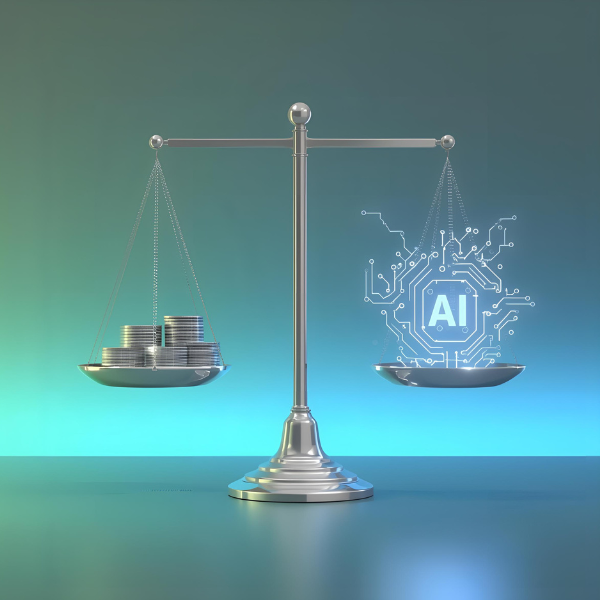
How AI Automation Saves Time and Cuts Costs for Business
How AI Automation Saves Time and Cuts Costs
In any business, time and money are two of the most critical resources. Leaders constantly search for ways to optimize operations, boost productivity, and improve the bottom line. One of the most powerful strategies to achieve this is through automation, and today, artificial intelligence is taking automation to an entirely new level. AI automation goes beyond simple, rule-based tasks; it learns, adapts, and handles complex workflows that once required human intervention.
This article will explore how AI automation is a game-changer for businesses looking to save time and reduce costs. We will delve into specific examples of how intelligent automation streamlines processes across different departments, from finance to customer service. You will gain practical insights on how to identify opportunities for AI automation within your own organization and begin reaping the financial and productivity benefits.
Understanding AI Automation vs. Traditional Automation
Before diving in, it’s important to distinguish between traditional automation and AI-driven automation.
- Traditional Automation is based on fixed rules. It excels at performing repetitive, predictable tasks. For example, a script that automatically sends a confirmation email after a purchase is a form of traditional automation. It follows a simple “if this, then that” logic.
- AI Automation incorporates intelligence. It can handle variability, interpret unstructured data, and make decisions. An AI system can read a customer’s email, understand its intent (e.g., a complaint, a question, a return request), and route it to the correct department or even draft a response. This ability to understand context and adapt is what makes AI automation so transformative.
By leveraging AI, businesses can automate a much wider and more valuable range of tasks, unlocking significant savings in both time and operational expenses.
Where AI Automation Delivers the Biggest Impact
AI automation isn’t a single solution but a versatile tool that can be applied across various business functions. Here are some of the key areas where it drives substantial time and cost savings.
1. Streamlining Finance and Administrative Tasks
The finance and administrative departments are often burdened with manual, time-consuming processes that are ripe for automation. These tasks are critical but add little strategic value.
- Automated Invoice Processing: Manually entering invoice data is tedious and prone to human error. AI-powered tools using Optical Character Recognition (OCR) can read invoices in any format, extract key information (like invoice number, amount, and due date), and enter it directly into your accounting system. This not only saves countless hours of data entry but also reduces costly errors and speeds up payment cycles.
- Expense Report Management: AI can simplify the entire expense reporting process. Employees can snap a photo of a receipt, and an AI tool will automatically pull the relevant data, categorize the expense according to company policy, and flag any out-of-policy spending. This drastically reduces the time both employees and finance teams spend on expense management.
2. Revolutionizing Customer Support
A positive customer experience is crucial for retention, but running a 24/7 support center is expensive. AI automation offers a way to provide instant, high-quality support while cutting costs.
- Intelligent Chatbots and Virtual Assistants: Modern AI chatbots are far more capable than their early, rule-based predecessors. They can understand natural language, access customer history, and resolve a wide range of common issues—from tracking an order to answering product questions—without human involvement. This frees up human agents to handle more complex and sensitive customer problems.
- Automated Ticket Triaging: AI can analyze incoming support tickets (whether from email, social media, or a contact form), determine the issue’s priority and category, and automatically route it to the right agent or department. This ensures that urgent issues are addressed quickly and that tickets don’t get lost in a general inbox, improving resolution times and customer satisfaction.

3. Optimizing Marketing and Sales Efforts
AI automation enables marketing and sales teams to work smarter, not harder. It helps them personalize outreach at scale and focus their energy on the most promising leads.
- Personalized Marketing Campaigns: AI can analyze customer data to segment audiences with incredible precision. It can then automate the delivery of personalized email campaigns, ad creatives, and product recommendations tailored to each segment’s behavior and preferences. This increases engagement and conversion rates, leading to a better return on marketing spend.
- Automated Lead Nurturing: Once a new lead enters your system, AI can trigger an automated nurturing sequence. This could involve sending a series of targeted emails with relevant content over several weeks. This process keeps your brand top-of-mind and warms up the lead, so when a salesperson finally reaches out, the prospect is more informed and ready to talk.
4. Enhancing Human Resources Operations
HR departments manage a significant amount of administrative work, particularly during the recruitment and onboarding phases. AI can automate many of these tasks, allowing HR professionals to focus on the human side of their roles.
- Resume Screening: Manually reviewing hundreds of resumes for a single job opening is a massive time sink. AI-powered recruitment tools can screen resumes in seconds, ranking candidates based on how well their skills and experience match the job description. This allows recruiters to focus their attention on the most qualified applicants from the start.
- Streamlined Onboarding: AI can automate many parts of the employee onboarding process. This includes sending out new-hire paperwork, granting access to necessary systems, and providing answers to common questions via an internal chatbot. This creates a smoother, more efficient onboarding experience for new employees.

How to Get Started with AI Automation
Implementing AI automation doesn’t have to be a daunting, large-scale project. A strategic, step-by-step approach is most effective.
- Identify High-Impact, Low-Complexity Tasks: Start by looking for the “low-hanging fruit.” What are the most repetitive, time-consuming, and rule-based tasks in your organization? These are often the best candidates for an initial automation project.
- Start Small with a Pilot Project: Choose one specific process to automate, such as invoice processing or customer support ticket routing. This allows you to test the technology, measure the results, and demonstrate ROI without a massive upfront investment.
- Choose the Right Tools: There is a wide array of AI automation tools available, from all-in-one platforms to specialized solutions. Select a tool that fits your specific needs and can integrate with your existing software stack (e.g., your CRM or accounting software).
- Measure and Communicate Success: Track key metrics before and after implementing automation. This could be hours saved, reduction in errors, or faster response times. Share these successes with stakeholders to build momentum and gain support for further automation initiatives.
Conclusion
AI automation is no longer a futuristic concept; it is a practical tool that businesses can use today to achieve significant time and cost savings. By automating repetitive and manual processes in departments like finance, customer service, and HR, you free up your team to focus on strategic, high-value work that drives growth. This shift not only improves your bottom line but also increases employee satisfaction by removing tedious tasks from their daily workload.
The key to success is to start strategically. Identify your biggest operational bottlenecks, run a focused pilot project, and build from there. By embracing AI automation, you can create a more efficient, resilient, and competitive organization.


